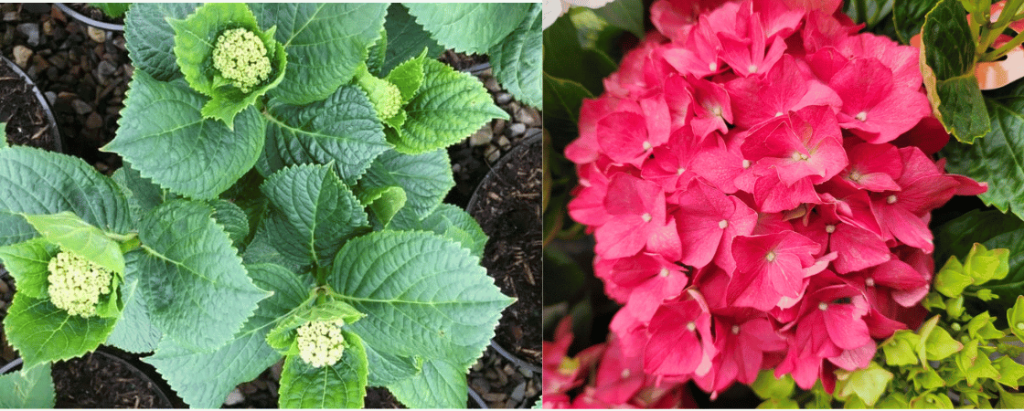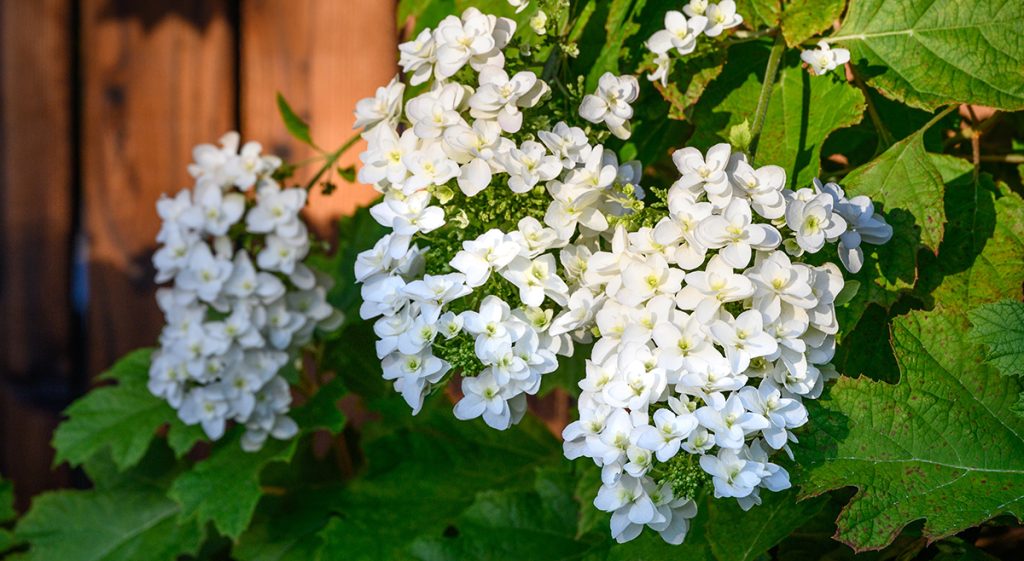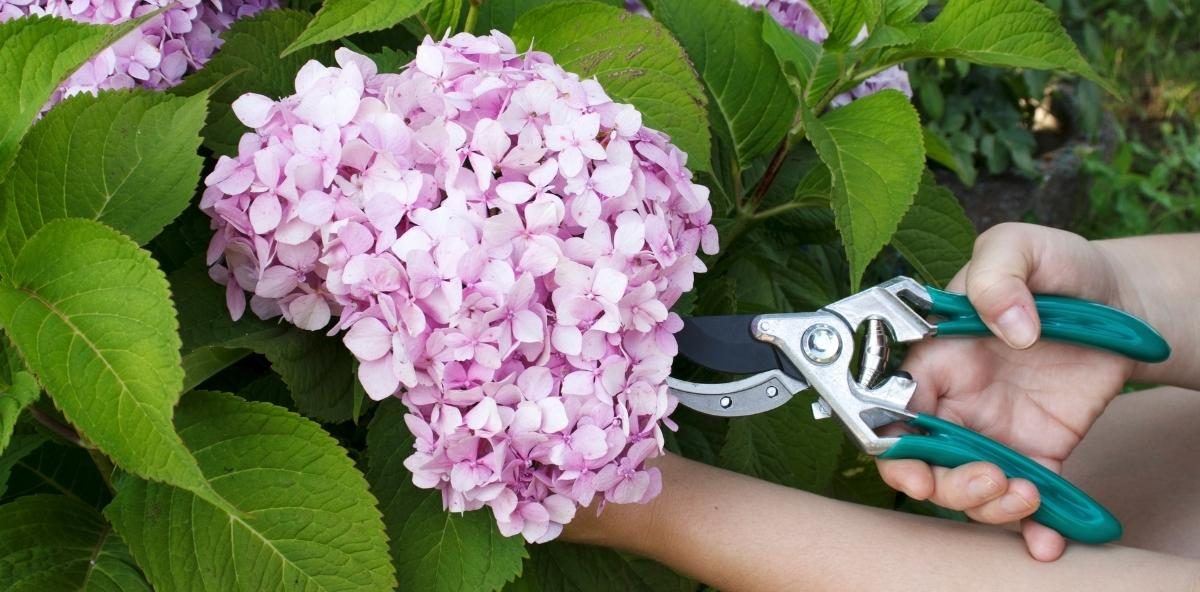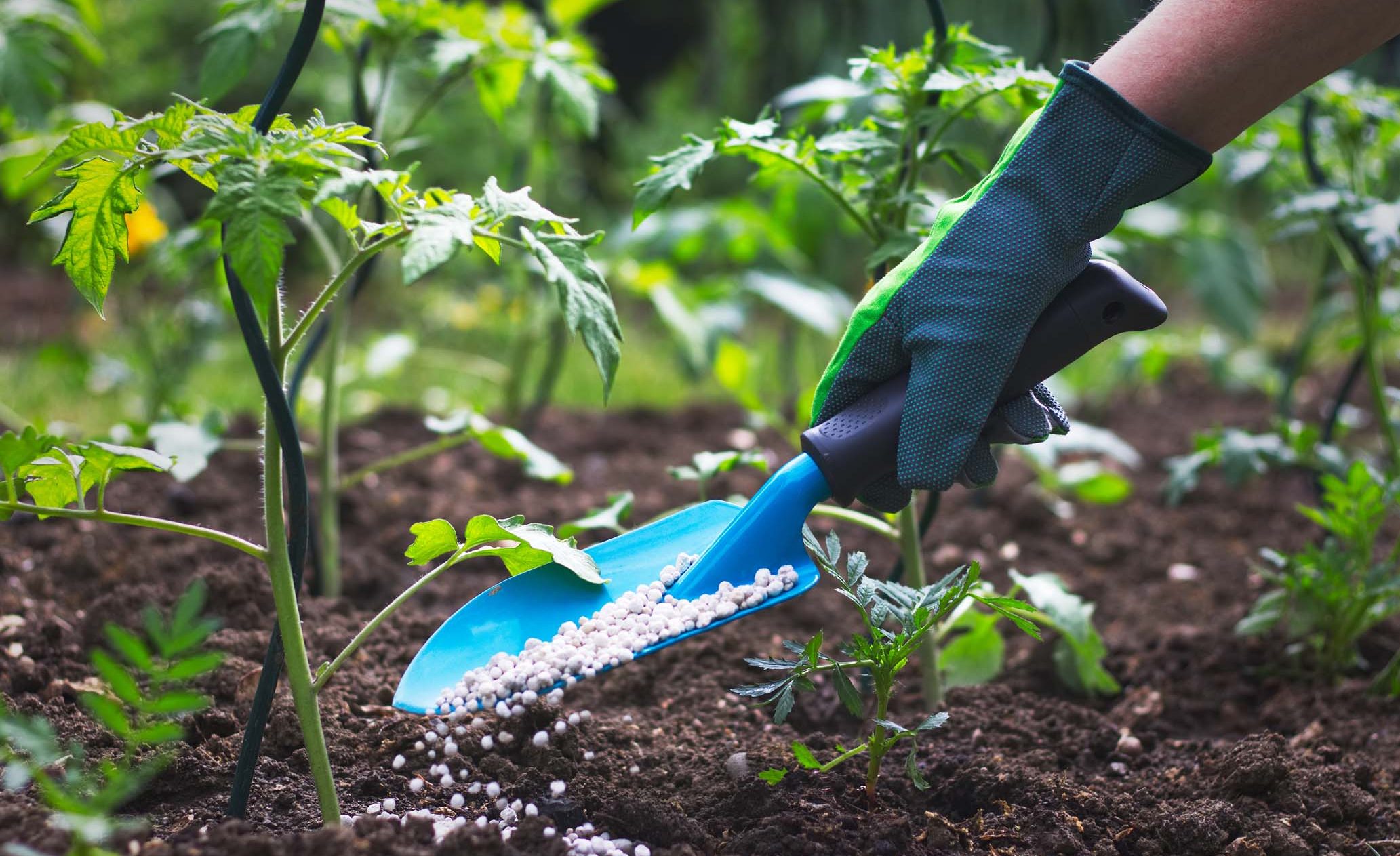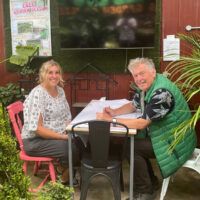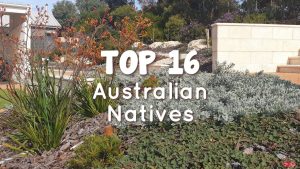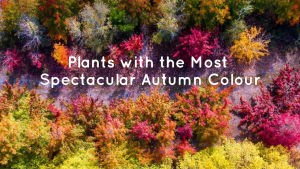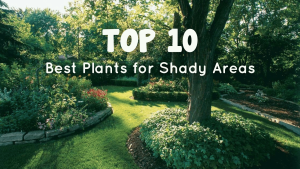3 Things to Know about Hydrangeas
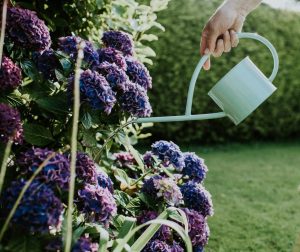 The first one is that they LOVE water! They NEED water and basically they’ve GOT to have water. It’s water, water, water. And that’s why they call ’em HYDRAngeas I guess. (Hydro = water, get it!)
The first one is that they LOVE water! They NEED water and basically they’ve GOT to have water. It’s water, water, water. And that’s why they call ’em HYDRAngeas I guess. (Hydro = water, get it!)
Now my father grew hydrangeas commercially in really hot sun. But he’d water them, and water them, and water them. So, with enough water you can grow almost any hydrangeas anywhere. Now that’s why people mostly grow them in the shade because once you put them in the shade, you don’t need nearly as much water.
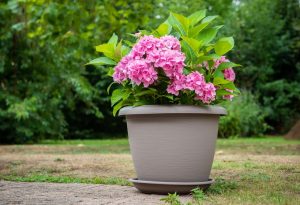 Now because hydrangeas need plenty of water it’s good to grow them in a shady spot. If you grow them in a pot, it’s a good idea to put a saucer underneath the pot so that they can soak up the water and the water doesn’t drain away too quickly.
Now because hydrangeas need plenty of water it’s good to grow them in a shady spot. If you grow them in a pot, it’s a good idea to put a saucer underneath the pot so that they can soak up the water and the water doesn’t drain away too quickly.
But basically what is a hydrangea? A hydrangea is a deciduous bush. It loses its leaves in the winter and basically the cycle of a hydrangea is that it just keeps shooting away. Now there are exceptions with hydrangeas. There are evergreen types of hydrangeas, but most hydrangeas shoot away. They shoot away at the end of winter/start of spring.
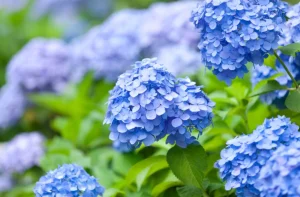 They get new shoots on them and then as you’re approaching Christmas, you start to get large flowers on the end of some of the shoots. They start with a very brilliant clean colour like a white one or a red one. And these flowers remain on them right through until April and May.
They get new shoots on them and then as you’re approaching Christmas, you start to get large flowers on the end of some of the shoots. They start with a very brilliant clean colour like a white one or a red one. And these flowers remain on them right through until April and May.
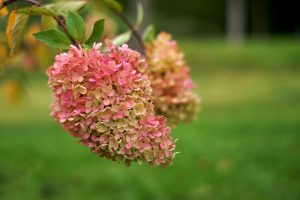 Then they start to go into their autumn colours. So, one colour might get kind of greeny tinges to it. Another might get sort of bronzy and purpley tips to it. Now these sorts of autumn coloured hydrangea are really, really beautiful. And they were the main ones that my parents used to pick and sell.
Then they start to go into their autumn colours. So, one colour might get kind of greeny tinges to it. Another might get sort of bronzy and purpley tips to it. Now these sorts of autumn coloured hydrangea are really, really beautiful. And they were the main ones that my parents used to pick and sell.
So, with hydrangeas, the flowers go right through from late spring or early summer until they are almost into the winter. And in actual fact, if you cut hydrangeas that are autumn coloured and hang them and dry them, they can hang as a dried flower and last for years after that. It’s a very versatile flower and a very versatile plant.
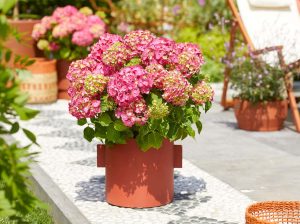 You can grow hydrangeas in a pot, you can grow them in a garden bed. If you grow them in pots, you can bring them inside at certain times of the year. For example, there are beautiful, brilliant red hydrangeas that are just gorgeous to bring inside for Christmas. And if you mixed them up with some white hydrangeas, they would just look lovely inside for the festive season.
You can grow hydrangeas in a pot, you can grow them in a garden bed. If you grow them in pots, you can bring them inside at certain times of the year. For example, there are beautiful, brilliant red hydrangeas that are just gorgeous to bring inside for Christmas. And if you mixed them up with some white hydrangeas, they would just look lovely inside for the festive season.
Now you don’t want to bring them indoors for a long time, but for a short period they’re ok to be indoors. You can grow hydrangeas in your alfresco dining area and you can grow them where you’ve got morning sun and afternoon shade.
Different varieties of Hydrangeas
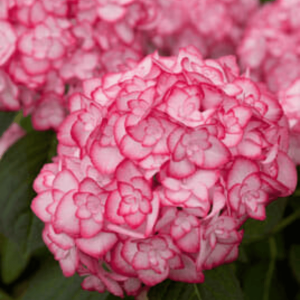 Now this is just one of an enormous variety of hydrangeas that we have available. There’s our gorgeous Christmas red one I just mentioned. But there’s another called “Miss Saori”. It has a purplish leaf, that contrasts fabulously with its beautiful pink and white flower. Now their double pink and white flowers are more complex than the normal hydrangea’s flower.
Now this is just one of an enormous variety of hydrangeas that we have available. There’s our gorgeous Christmas red one I just mentioned. But there’s another called “Miss Saori”. It has a purplish leaf, that contrasts fabulously with its beautiful pink and white flower. Now their double pink and white flowers are more complex than the normal hydrangea’s flower.
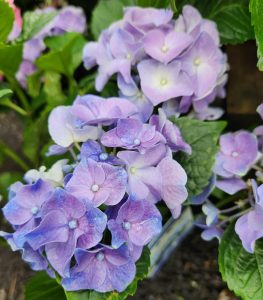 But you can also get hydrangeas with just the one colour, like a gorgeous pink flower that has a wonderful sort of warmth to it.
But you can also get hydrangeas with just the one colour, like a gorgeous pink flower that has a wonderful sort of warmth to it.
You can also get them with a lovely mauve toning or even ones with a really deep purple. Then you can get the “bi-colour” varieties which has two colours on the one flower.
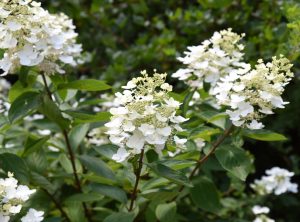 Now one of the reasons that I think hydrangeas have been coming back recently is that the Hamptons style garden has really become a thing in the last few years. In the Hamptons it’s a fairly mild climate compared to Australia. There people grow their hydrangeas out in the full sun. And the variety they go for is the Paniculata variety. Now these have a different style of leaf that is longer and a softer green leaf to the normal “ball” variety of hydrangea and their flowers are very often pointed, rather than round. Colourwise, mostly they start off in white and go through various pinks and different colours, pale pinks and things like that. They can even go to a very, very deep red. With the Paniculata variety it’s a fairly upright kind of a bush.
Now one of the reasons that I think hydrangeas have been coming back recently is that the Hamptons style garden has really become a thing in the last few years. In the Hamptons it’s a fairly mild climate compared to Australia. There people grow their hydrangeas out in the full sun. And the variety they go for is the Paniculata variety. Now these have a different style of leaf that is longer and a softer green leaf to the normal “ball” variety of hydrangea and their flowers are very often pointed, rather than round. Colourwise, mostly they start off in white and go through various pinks and different colours, pale pinks and things like that. They can even go to a very, very deep red. With the Paniculata variety it’s a fairly upright kind of a bush.
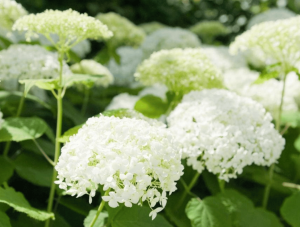 Another variety that’s very popular is the Annabelle. This has a beautiful white ball shaped flower with a lovely, long green leaf. And that’s particularly popular in the Hampton style gardens.
Another variety that’s very popular is the Annabelle. This has a beautiful white ball shaped flower with a lovely, long green leaf. And that’s particularly popular in the Hampton style gardens.
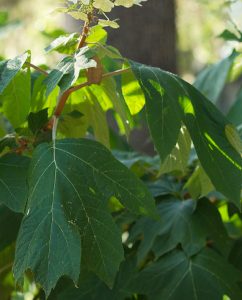 One more hydrangea I really go for is the “Oak Leaf”, so named because it has a much more interesting leaf than other hydrangeas. It’s actually shaped like a large oak leaf that has a lovely dark green colour with kind of rippled effect on it. The flowers are long and white. But what I really like about the Oak Leaf is that when it’s mature, it doesn’t grow very high, so it’s very good for mass planting where you don’t want to have a particularly tall plant. When you see a mass planting of them with their beautiful white flowers that sort of lay over the top of that beautiful, dark green, oak leaf foliage, it just looks fabulous.
One more hydrangea I really go for is the “Oak Leaf”, so named because it has a much more interesting leaf than other hydrangeas. It’s actually shaped like a large oak leaf that has a lovely dark green colour with kind of rippled effect on it. The flowers are long and white. But what I really like about the Oak Leaf is that when it’s mature, it doesn’t grow very high, so it’s very good for mass planting where you don’t want to have a particularly tall plant. When you see a mass planting of them with their beautiful white flowers that sort of lay over the top of that beautiful, dark green, oak leaf foliage, it just looks fabulous.
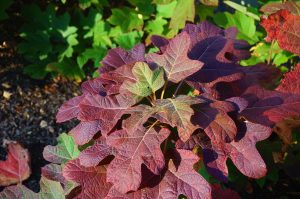 What’s also really great about the Oak Leaf hydrangea is that when winter comes and a lot of other hydrangeas shed their leaves and just look like dead sticks, the leaves on your Oak Leaf hydrangea will colour into burgundies and purples and reds, and then they will stay there all winter long keeping all their colours of burgundy, purple and red.
What’s also really great about the Oak Leaf hydrangea is that when winter comes and a lot of other hydrangeas shed their leaves and just look like dead sticks, the leaves on your Oak Leaf hydrangea will colour into burgundies and purples and reds, and then they will stay there all winter long keeping all their colours of burgundy, purple and red.
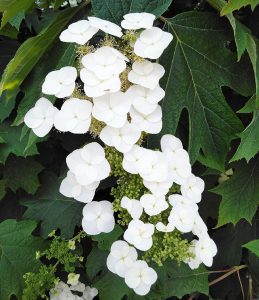 Then in springtime, when the new leaves come, they push off the autumn leaves and then suddenly it becomes renewed lovely and bright green. And then the flowers start almost immediately. So your Oak Leaf hydrangea, while not as spectacular as some of the other hydrangeas, it’s the only one in my opinion that looks good all year round.
Then in springtime, when the new leaves come, they push off the autumn leaves and then suddenly it becomes renewed lovely and bright green. And then the flowers start almost immediately. So your Oak Leaf hydrangea, while not as spectacular as some of the other hydrangeas, it’s the only one in my opinion that looks good all year round.
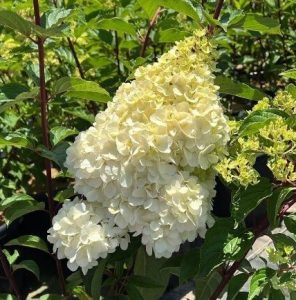 Now another really exceptional hydrangea is the Sundae Fraise. Now I was always told that Sundae Fraise could not be grown in full sun. But a friend of mine grew advanced ones in flower last year and he had a whole field of them. And I went up there in the hottest weather in February and they had massive flowers. The flowers were really long and they were big, beautiful flowers, with sort of whites turning to pinks, turning to deep pinks and then a tinge of red but absolutely magnificent flowers.
Now another really exceptional hydrangea is the Sundae Fraise. Now I was always told that Sundae Fraise could not be grown in full sun. But a friend of mine grew advanced ones in flower last year and he had a whole field of them. And I went up there in the hottest weather in February and they had massive flowers. The flowers were really long and they were big, beautiful flowers, with sort of whites turning to pinks, turning to deep pinks and then a tinge of red but absolutely magnificent flowers.
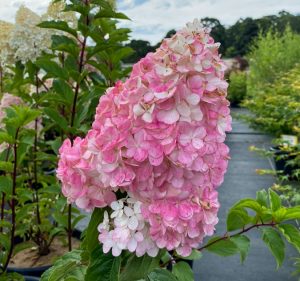 And there they were in absolute full sun in a really hot paddock. No shelter at all, and there was no sunburn on them. Of course he made sure they were given plenty of water. So if you are doing say, a Hamptons style garden or you love hydrangeas, but you’ve only got a sunny spot, what you want to consider is Sundae Fraise. Give it enough water and it can grow in full Melbourne sun all day sun, it’ll be fine.
And there they were in absolute full sun in a really hot paddock. No shelter at all, and there was no sunburn on them. Of course he made sure they were given plenty of water. So if you are doing say, a Hamptons style garden or you love hydrangeas, but you’ve only got a sunny spot, what you want to consider is Sundae Fraise. Give it enough water and it can grow in full Melbourne sun all day sun, it’ll be fine.
How the PH level of soil effects Hydrangeas
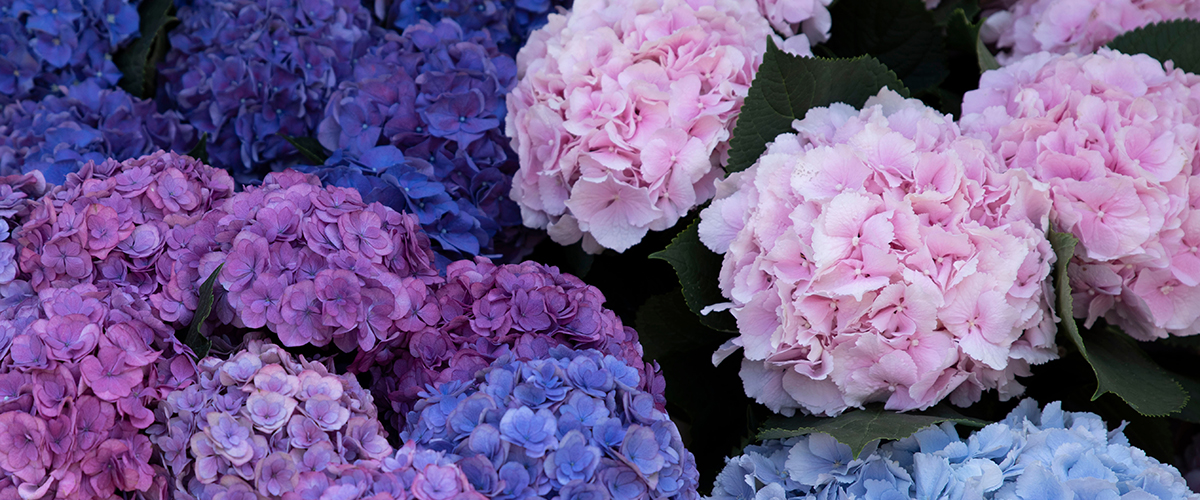
Now with hydrangeas, people will come in and they say to me, Chris, I want to have a blue hydrangea. Or Chris, I want to have pink hydrangeas. I want to have red hydrangeas. But in actual fact if I showed you a pink hydrangea or a red hydrangea the colour of the flower is not fixed, because one variety if planted in a high pH soil, say 7 or above, will take on a pink toning but the same plant, if planted in an acidic soil of a pH of say 5, it would turn a lovely soft blue.
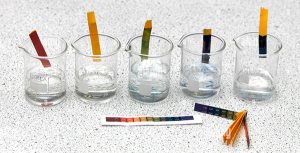 So hydrangea are basically like litmus paper. (Remember from your school science days where you would dip a piece of litmus paper into different acids and alkalines and it would turn a different colour?)
So hydrangea are basically like litmus paper. (Remember from your school science days where you would dip a piece of litmus paper into different acids and alkalines and it would turn a different colour?)
With hydrangeas they can be dark red with a high pH soil or they can be blue or purple or pale blue with a low pH soil. So you can adjust the soil to change the colour of the flowers on your hydrangeas.
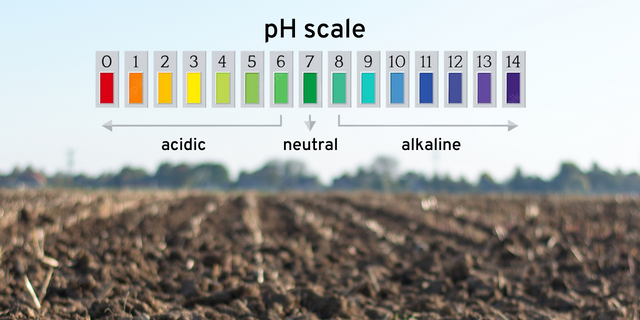 What you can do if you use for instance, an acidic product, like a fine crushed pine bark and grow your hydrangeas in fine crushed pine bark, they’ll tend to turn into blues and greens and things like that. Then if you, on the other hand, were to grow them in a very alkaline soil, using lots of dolomite lime for example, you’ll get them in the reds and the pink zonings.
What you can do if you use for instance, an acidic product, like a fine crushed pine bark and grow your hydrangeas in fine crushed pine bark, they’ll tend to turn into blues and greens and things like that. Then if you, on the other hand, were to grow them in a very alkaline soil, using lots of dolomite lime for example, you’ll get them in the reds and the pink zonings.
Now you can also go to certain stores and buy like packets of “blueing” mix for hydrangeas and “red” mix for hydrangeas and you can put them on your plants and grow red ones right next to blue ones if you like.
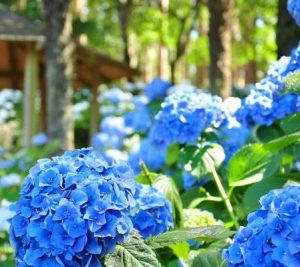 But before you plant your hydrangeas, what I suggest is you go for a little walk around your neighbourhood and see what colour the hydrangeas are in your local area. And if they’re all blue and you buy a “red” hydrangea and plant it, it’s going to turn blue because clearly the soil in your area is fairly acidic. I do have people come in and say to me “Chris, I bought a red hydrangea from you and I planted it and now it’s turned blue!”. Now you know why!
But before you plant your hydrangeas, what I suggest is you go for a little walk around your neighbourhood and see what colour the hydrangeas are in your local area. And if they’re all blue and you buy a “red” hydrangea and plant it, it’s going to turn blue because clearly the soil in your area is fairly acidic. I do have people come in and say to me “Chris, I bought a red hydrangea from you and I planted it and now it’s turned blue!”. Now you know why!
So changing the colour of your hydrangeas to suit what you want is about changing the pH of the soil, not changing the variety of the hydrangea you plant.
The trick to pruning Hydrangeas
Another tip with hydrangeas is about pruning. If you want to have beautiful flowers in spring, the trick is not to prune back all of the stems of your hydrangea, because if you cut back all the shoots in winter, they will not flower in the coming spring. They will flower in the following spring. So the trick is to only cut back half of your shoots in winter and leave the other half unpruned. The unpruned ones will flower, they can’t help but flower and the pruned ones will grow foliage.
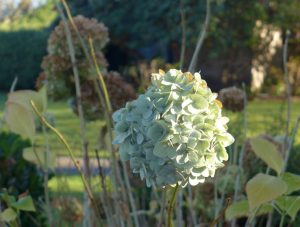 Now if you don’t trim your hydrangea, what happens is you get more and more shoots, the hydrangea gets bigger and more scraggly. Then the flowers gets smaller because the energy of the plant gets distributed through more flowers. So to have big, beautiful, impressive flowers, you do need to trim it back. And if you trim half the shoots back one year and then the other half back the next year, what’ll happen is that you can keep your hydrangea nice and compact and it will be full of big, beautiful flowers.
Now if you don’t trim your hydrangea, what happens is you get more and more shoots, the hydrangea gets bigger and more scraggly. Then the flowers gets smaller because the energy of the plant gets distributed through more flowers. So to have big, beautiful, impressive flowers, you do need to trim it back. And if you trim half the shoots back one year and then the other half back the next year, what’ll happen is that you can keep your hydrangea nice and compact and it will be full of big, beautiful flowers.
The final step, Fertiliser
The next thing is fertiliser. When we had the hydrangea farm, we used animal manure on them like chicken manure and they seemed to love that. But I think any sort of good fertiliser like Osmocote or something like that will get you nice big foliage and beautiful big flowers, so long as you do the proper pruning I’ve been describing. And then it’s a matter of using a LITTLE bit, not a gross amount of fertiliser, and you will get a much stronger plant.
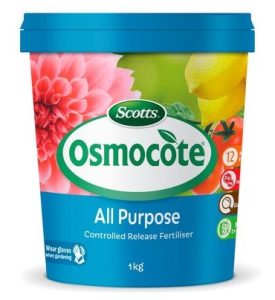 So just fertilise them once or twice a year with chicken manure or Osmocote or something like that, and the time to do it is probably around springtime and then probably a supplementary dose around Christmas time is going to do nicely. Combine with plenty of good watering and the right trimming and you will end up with a nice big beautiful hydrangea.
So just fertilise them once or twice a year with chicken manure or Osmocote or something like that, and the time to do it is probably around springtime and then probably a supplementary dose around Christmas time is going to do nicely. Combine with plenty of good watering and the right trimming and you will end up with a nice big beautiful hydrangea.
If you’re growing them in pots remember to use a good quality potting mix not a cheap one. Now speaking of pots, some people think you can grow different coloured flowers on the same hydrangea plant but you can’t really. What some people do is a bit of a trick.
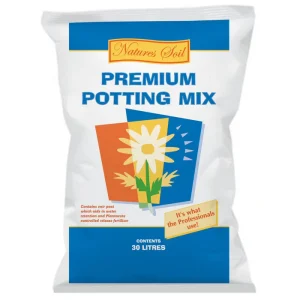 If you pick two distinctly different, contrasting hydrangeas and plant them both in the same pot together and trim them correctly, you could actually get an assortment of different coloured flowers and create the illusion of a multicoloured flower by combining two plants together. But that’s the only way to do it.
If you pick two distinctly different, contrasting hydrangeas and plant them both in the same pot together and trim them correctly, you could actually get an assortment of different coloured flowers and create the illusion of a multicoloured flower by combining two plants together. But that’s the only way to do it.
In Closing
So there you have it. Everything you need to know to harness the charm of hydrangeas. If you want to know more, visit my special hydrangeas page here.



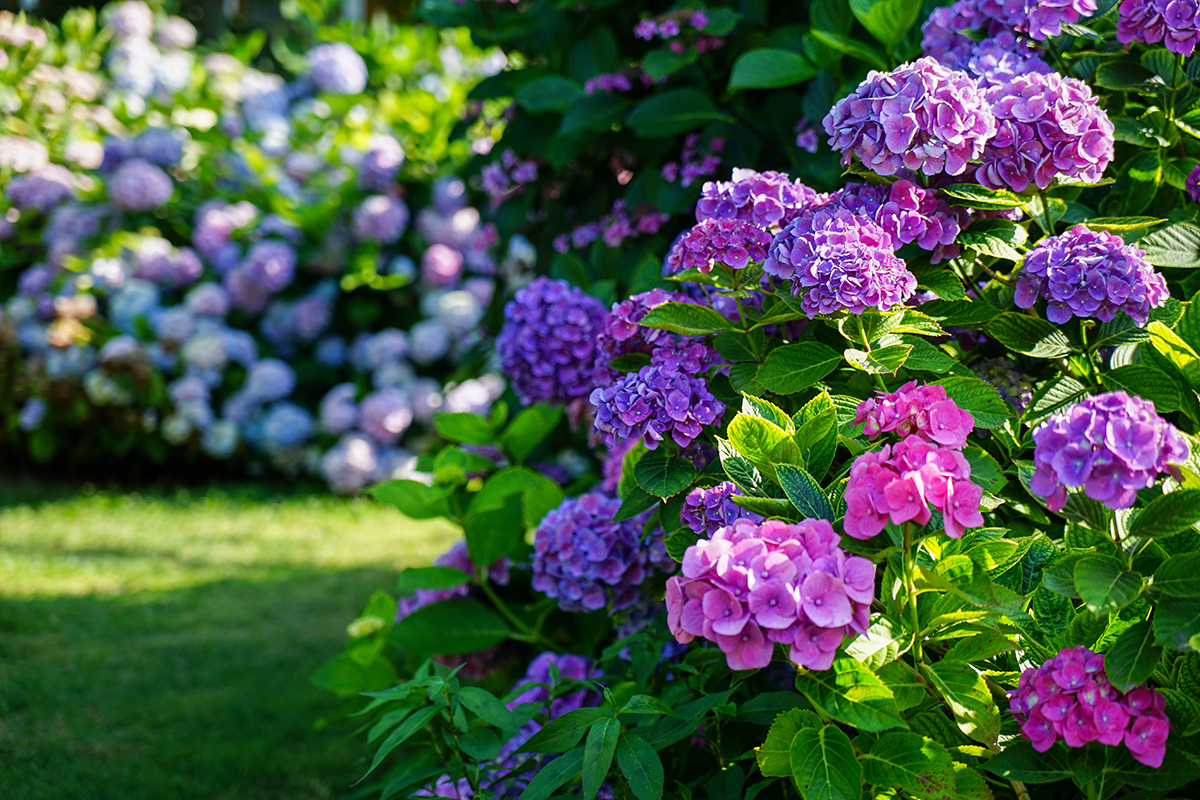





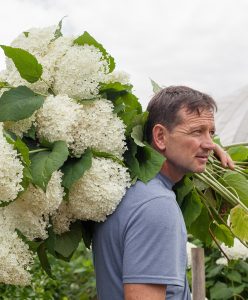
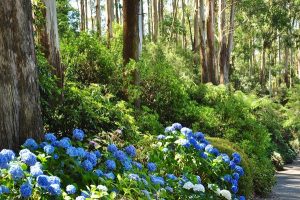 So, my parents would be picking heaps and heaps of these hydrangeas and we kids would help carry them in big bunches up the hill. Even back then in the Dandenongs hydrangeas were very popular. Everybody had a couple in their garden. But in the last few years they’ve tended to go out of fashion and people have forgotten about them and they’ve forgotten how to grow them. So that’s why I’ve written this article.
So, my parents would be picking heaps and heaps of these hydrangeas and we kids would help carry them in big bunches up the hill. Even back then in the Dandenongs hydrangeas were very popular. Everybody had a couple in their garden. But in the last few years they’ve tended to go out of fashion and people have forgotten about them and they’ve forgotten how to grow them. So that’s why I’ve written this article.